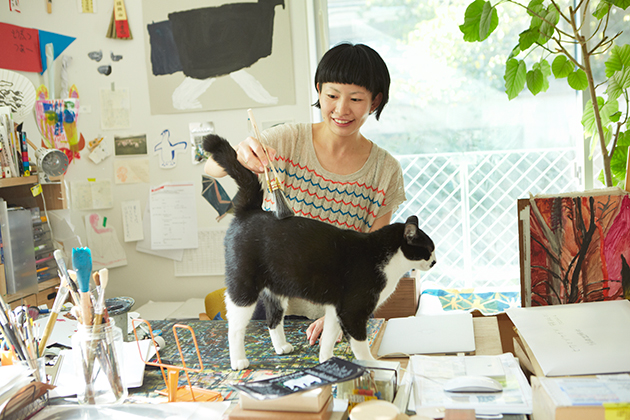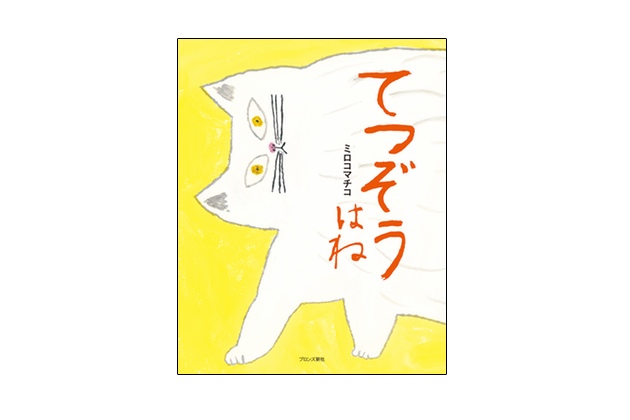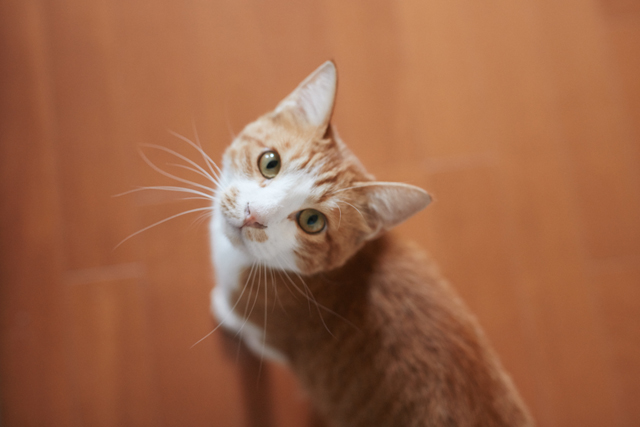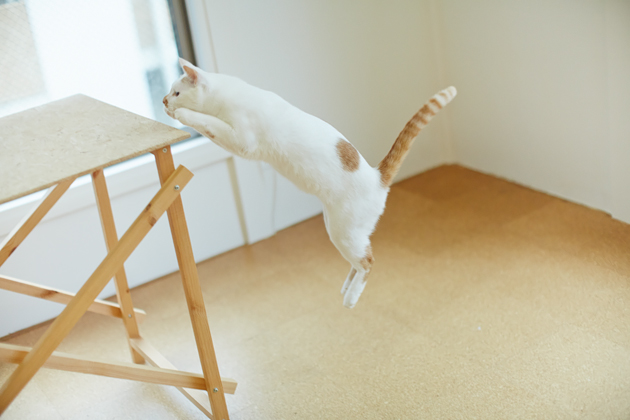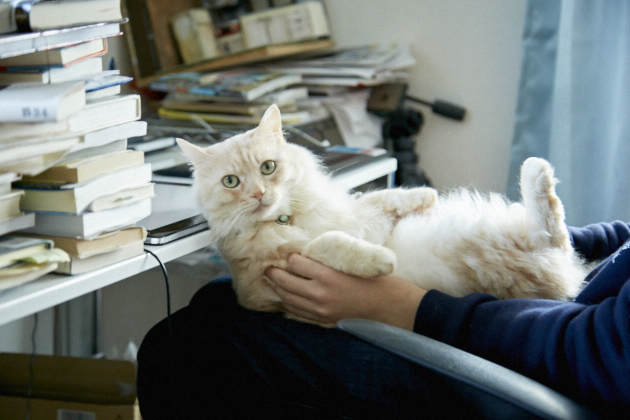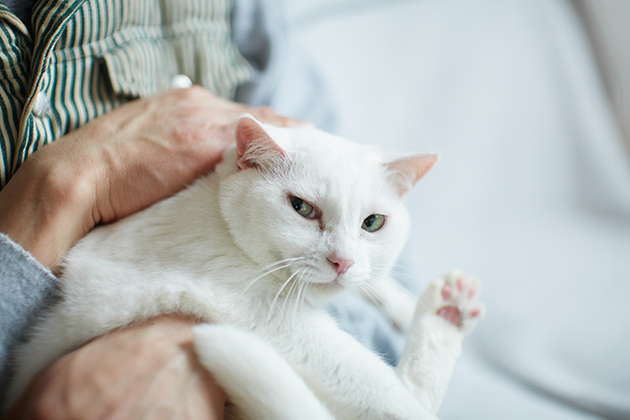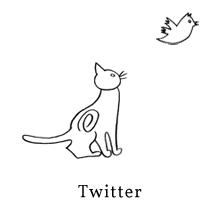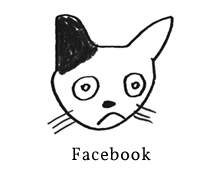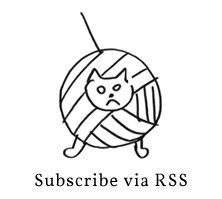Since winning the Grand Prize at the 18th Japan Picture Book Awards with her debut work titled 'Ōkami ga Tobu Hi' (The Day the Wolf Flies), painter and picture book author Miroco Machiko has continued to charm people with her illustrations of animals. Each of her illustrations features a bold touch and unique perspective. Miroco currently lives alongside two cats - the brothers Soto and Bo. In September, her new book titled 'Tetsuzō Wane' (Bronze Shinsha) was published. It chronicles the days she spent with her beloved white cat named Tetsuzō, with whom she lived before taking in the brothers. We talked with her about how Tetsuzō became a picture book as well as about her life with the new cats.
From a dog-lover to a sudden lover of cats
—Did you ever have a cat when you were growing up?
"No, I never lived with a cat until I was an adult. We had a dog at home, which made me pretty much a dog-lover. Our next door neighbor had a cat and I had played with it, but I never imagined that I would one day get a cat myself. I took in Tetsuzō right after I graduated from college. He was being sold at a pet shop. I would come in and watch him everyday, thinking how cute he was. After a while he was put on a sale. I guess nobody wanted to buy him even though he was only two and a half months old. But I couldn't help it. I would walk into the store and demand to hold him. I never really thought about keeping him when I was watching him - it was like greeting a stray cat in the neighborhood. But as soon as I held him in my arms... all I could say was, 'I will take him!' So that's what I did."
- What was it like when you actually started living together?
"He had a biting habit since the first time I held him at the pet shop. He would bite my big toe while I was asleep. I never imagined a cat could be so aggressive. Of course, they were playful soft bites. I thought he would keep more of a distance, but he quickly got closer than I expected. He actually didn't like being held in arms, so we never slept together. He would always take his position on the edge of my futon. Though he would be near me, he never liked too much actual contact."
- Was it much different from having a dog?
"Tetsuzō learned to use toilet on his first try. I was surprised by his ability to learn. Also, dogs will eat anything you gave them. Tetsuzō, however, he wouldn't touch something if he didn't want it. And when he was hungry, he would eat so neatly. He really was such a smart cat"
Brothers with opposite characters!? Soto and Bou
- After Tetsuzō passed away, you started living with Soto and Bou. How did you first encounter them?
"Tetsuzō got sick and died when he was eight. At that time, I felt it would be impossible for me to get another cat. Friends and acquaintances occasionally tried to get me to take in foster cats they wanted to rescue. However, I was so devastated by my loss that I turned down their offers. Later, a reader of my blog came to my exhibition and tearfully told me about how she had lost her cat. When I asked her 'When did you lose him?' she replied 'Ten years ago.' That's when I realized that the pain is going to last even longer than a decade. In fact, it doesn't even matter how much time has passed since the loss. So I started thinking that If there are cats that need help now, I should take them in. I already had a home that was ready for keeping a cat. Of course, I was just waiting for the right moment and thinking that maybe in a year or two I would be ready... Then I talked to a writer friend who rescues cats every now and then. I told him to let me know if there were any cats in trouble. Two days later I took in Soto and Bou."
- I see. So it was a sudden encounter.
"When my friend picked them up for me, there were actually three brothers that had been abandoned together. They included the pink-nosed Soto, black-spotted Bou and another black cat. I wanted to take all three of them home, but my apartment had a rule about only keeping two cats at a time. I was forced to pick. It was absolutely impossible for me to separate the brothers and just pick two of them! However, someone called wanting the black cat. I therefore took in the two black-and-white ones. They had been abandoned near the Sotobo railroad line, so I named one of the Soto and the other Bou."
- Did you have feelings that were similar to when you first held Tetsuzō in your arms?
"They were both cute as can be. However, only several months had passed since Tetsuzō's passing. Still being in mourning, I was honestly not sure if I could come to love other kittens. When he saw the new cats, even my husband said 'I still feel bad for Tetsuzō so I cannot really care for them.' So I said to him 'After death comes new life. We had better take good care of Soto and Bo - just as we did for Tetsuzō.' He acted as if he didn't care at first. However, whenever I wasn't home, he would play with them and baby-talk to them like, 'oh little kitties, how cute you are!' (laughs) I guess he was just not being honest with his heart."
- Didn't you also go through changes of heart?
"We'd pray for Tetsuzō and tell his spirit that he wasn't forgotten. When he passed away, the home felt lonely without him. However, as soon as the two new kitties joined us, everything became busy and merry. Since Tetsuzō had become sick, we were used to thinking about how much he must be suffering. But when Soto and Bo came into our lives, they helped us remember all the fun times, such as the day Tetsuzō first arrived and how he played with his toys. I kind of wrote about this in the book 'Tetsuzō wane,' but I'd compare the new cats with Tetsuzō and wonder how could they eat in such a messy manner even though they were using the same bowls and litter box. I could bring back all the fun and bright memories."
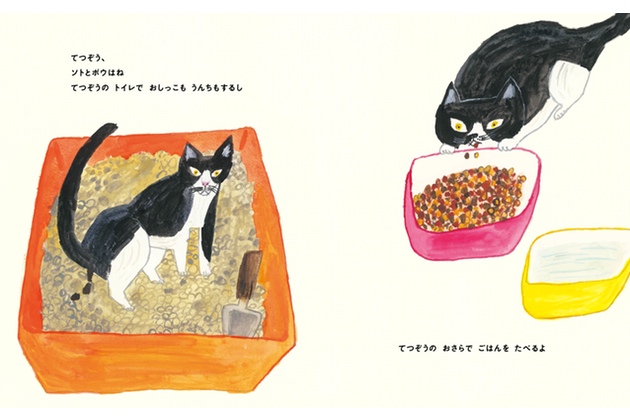
from the picture book "Tetsuzō Wane" left: "Hey Tetsuzō, Soto and Bou are using your bathroom." right: "And they use your bowl for food."
- What kind of characters do Soto and Bou have?
"Soto is both slightly macho and neurotic. He is assertive and always acts as if human men are his rivals. He will even pee on the cushions other men sat on after they left. Bou is more absent-minded. He's also a slow-eater, even though he's more on the chubby side. Despite being brothers, they have completely different characters. They are still in a frisky state - running around all over the place. This is natural considering the fact that they are still a year and eight months old. They love this octopus toy, so I always keep them in stock (laughs). I feed them dry cat food and occasionally dried fish. They love me very much and I'm pretty sure that they think of me as their mother."
Tetsuzō memories become a picture book
What led you to publish 'Tetsuzō Wane', your book about Tetsuzō?
"I got a call from Mr. Wakatsuki, the chief editor at Bronze Shinsha earlier this year. He happened to know about the illustration I painted for a calendar piece. It stated, 'When I die, I want to be with Tetsuzō again.' So he proposed that I make a picture book about my late cat. I used to talk about Tetsuzō on my blog, but I never thought about making a book about him. This was right after his passing, so Mr. Wakatsuki said it was okay if we put this off until a future date. However, I responded that I wanted to do it right away. That said, I still started crying when we met for a book planning session. I thought it would be a long time before all the sorrow melted away, but I finished the rough draft around March, and brought it to Bronze Shinsha right away. They were surprised to see me finish it so soon."
- I saw the whole process broadcast on the TV Program titled, 'Jōnetsu Tairiku' (Passion Continent), and the book did so well that it was completely sold out within six months. Following the first draft, how did you actually finish the book?
"We were kind of thinking, 'Well, it will be nice when it's finished someday.' However, after completing the initial draft, I got some momentum going and we had meetings almost every week. There were many parts of the book where Tetsuzō was really featured strongly, so I added smaller episodes to reflect the long years we spent together. It contains more than just stories of Tetsuzō. I also wanted to depict how Soto and Bo came along after Tetsuzō passed away and started to naturally live in the same space - within the smell and presence that Tetsuzō left."

from the picture book "Tetsuzō Wane". clockwise from top left: "One day, I found a door mat folded up. I opened it and found his poop. he had hid it. Tetsuzō is very smart." "You punch the scary vacuum cleaner while it's stopped." "You also are a talented painter." "You even try to open canned foods."

The obi on the picture book "Tetsuzō Wane" even folds into a miniature book.
- Though there are many picture books that take up cats as the central motif, what makes 'Tetsuzō Wane' unique is that it is also a story of rehabilitation. Moreover, it's a very personal story, which is quite different from the other picture books you have made.
"I would have never made the book unless Mr. Wakatsuki suggested it to me. I usually don't like putting sententious things or my personal matters in picture books. Rather than things about myself, I usually prefer to depict the imaginary world or places that I dream of. In addition, Tetsuzō, Soto and Bo are all actual living creatures. As for Tetsuzō, I loved him so much that I couldn't just look at it as 'cat-mania' (laughs). I actually wasn't sure if it was okay to draw him. I was very happy when I was told I could do whatever I wanted with the book. While I was creating the book, everything felt completely different from the previous books I had made."
- Are there any differences between drawing cats and drawing other animals?
"To be honest, I've hardly ever drawn cats. Cats are too intimate. I see them in life so much in my life. I could never draw cats better than they look in real life. As for wild animals, you can't see them up-close very often. You can't touch or pet them. I always maintain an admiration for the world of wildlife when I draw such animals. It is completely different from the lukewarm human world. So I was never good at drawing cats. But now that I have more opportunities to draw them, I find that I've even been invited to an exhibition of 'cat painters'. I am going to put paintings of Soto and Bo on exhibition at a show titled 'Before You Go To the Pet Shop' which will be held at the Ehontokinomino Museum in Niigata. I use a general name when I paint other animals, like, 'tiger' for example. However, these paintings all feature cats as individuals, like this is Soto and this is Bo. That makes painting cats completely different from when I paint other animals. Each cat has a different appearance - the way they stand, so to speak. Soto and Bo also have totally different silhouettes, which shows their respective characters. And that's what I want to depict."
- What's the strongest message you want to convey in 'Tetsuzō Wane'?
"Honestly, most of it is just my desire to show off how cute Tetsuzō was (laughs). As I wrote stories about Tetsuzō and his death on my blog, I got to realize that everybody experiences separation of some kind, even though they don't usually show it. This isn't just about animals - its true about family members and friends. When we lose them, we each have our own ways of embracing the sorrow and coping with the separation. Though it was tough, I am happy that I was with him when he passed, and it is important for me to publish this book at this time - not ten years later, but while I am still holding onto these vivid feelings of sadness and heartbreak. I wanted to make this book and then see what comes out of. It is sad to remember things, but this is also how we live with things. I wanted to say, not in some dramatic way - but just in the way that I am, in the natural way - that life goes on."


